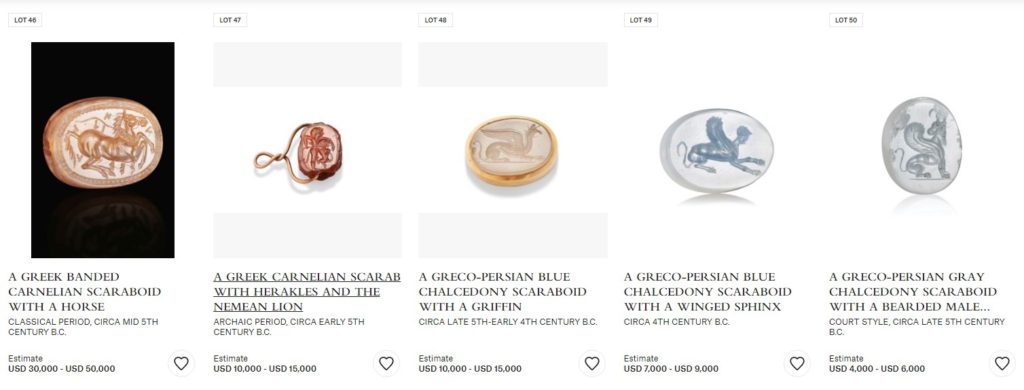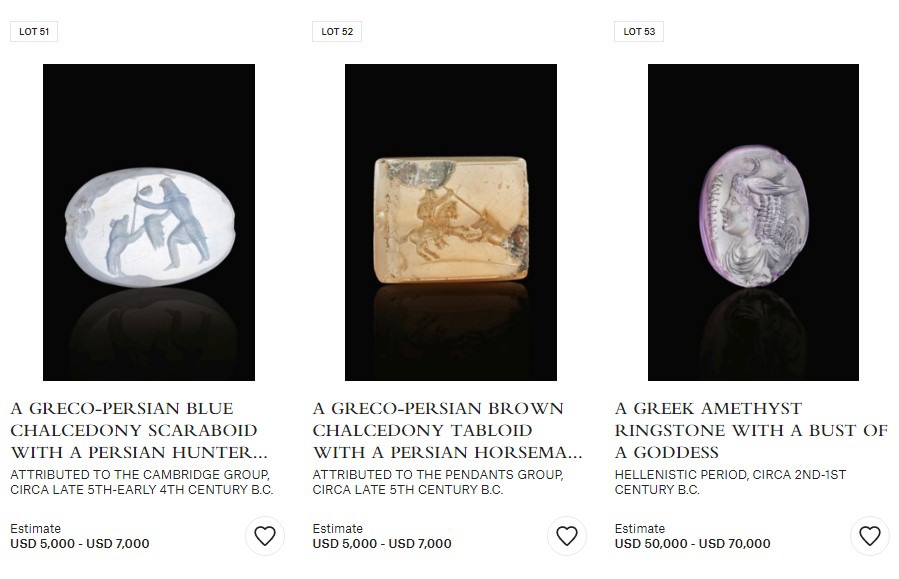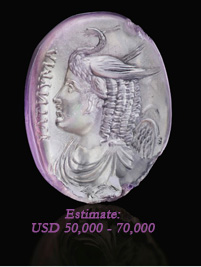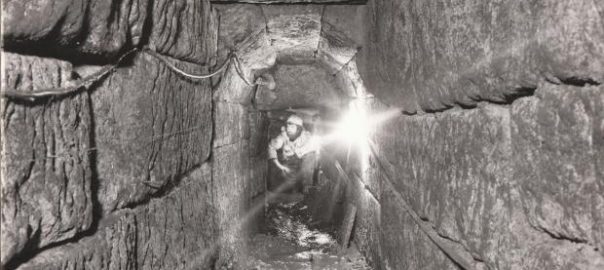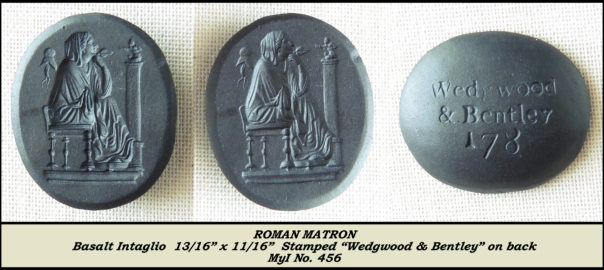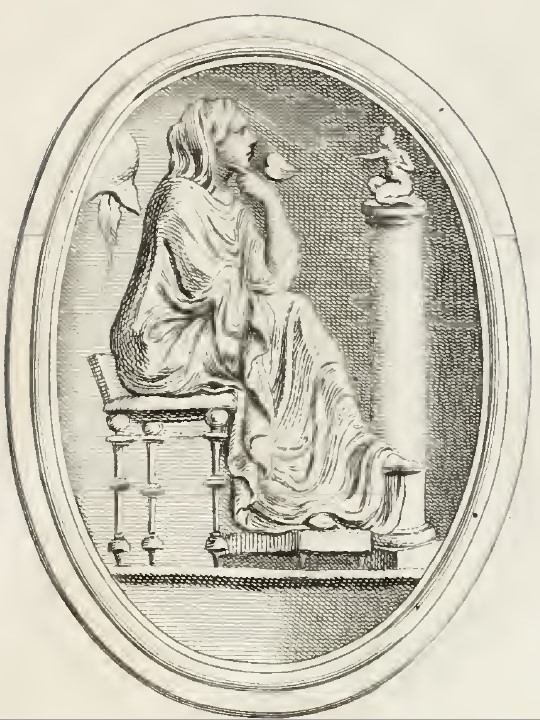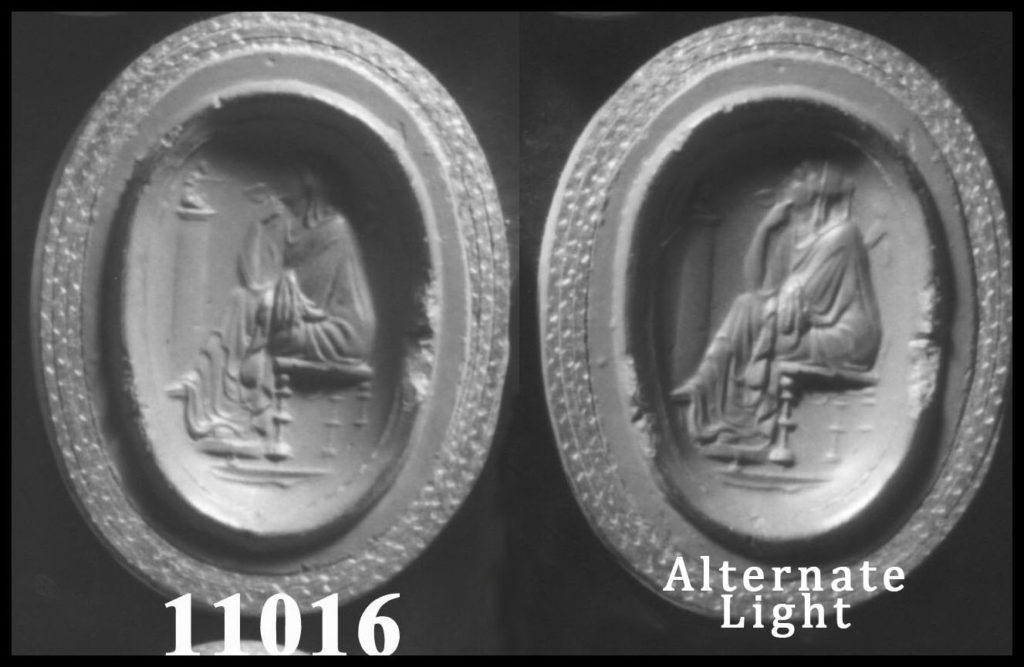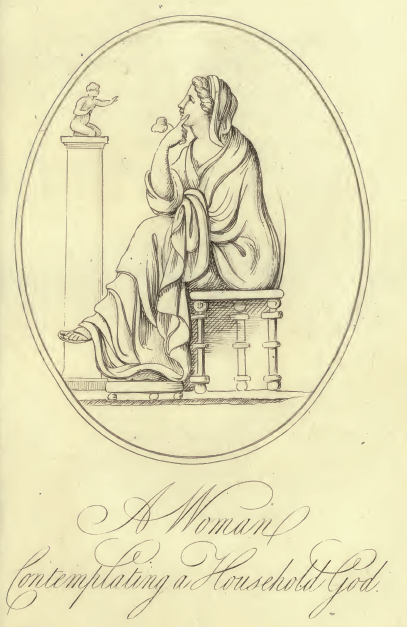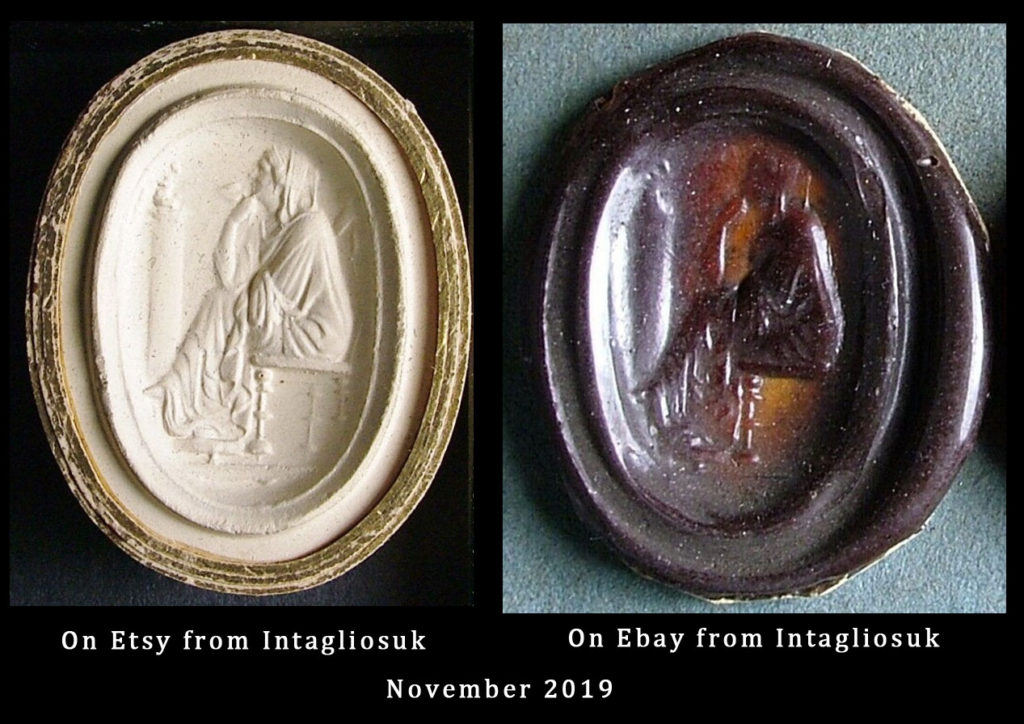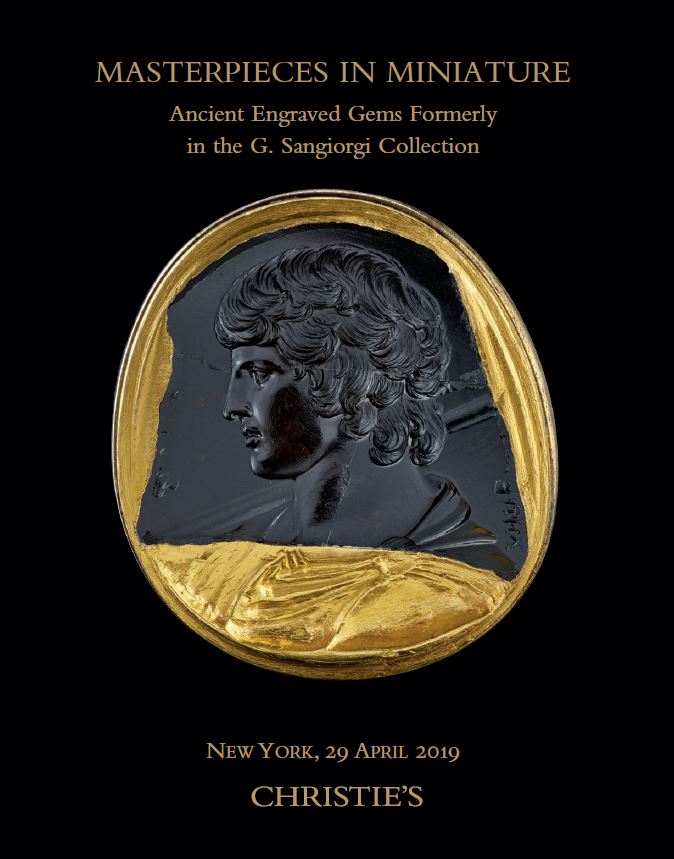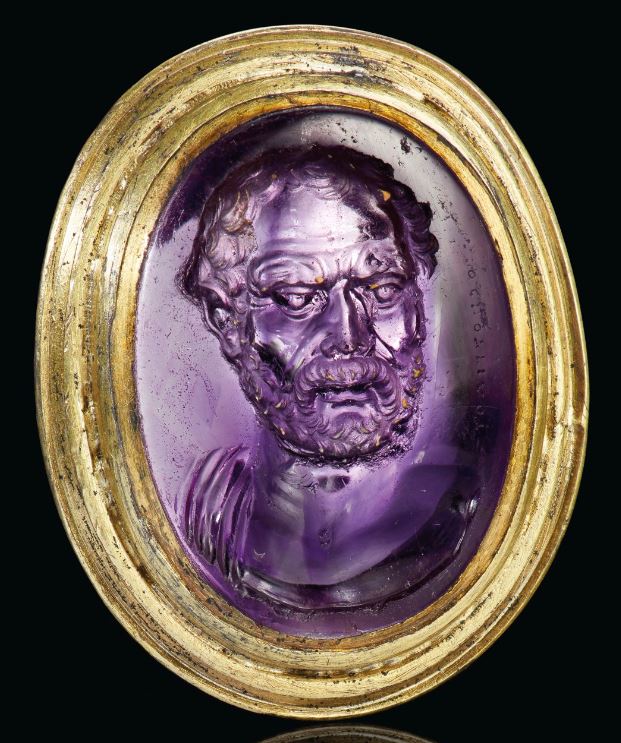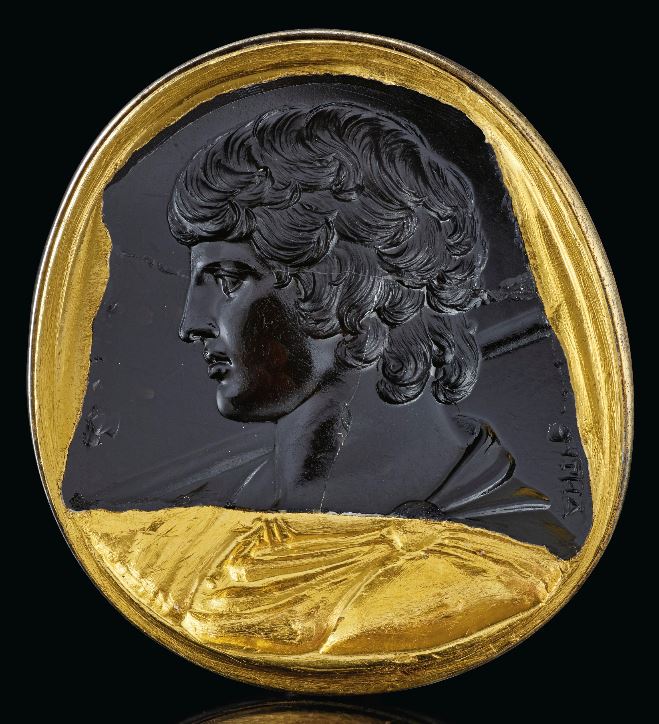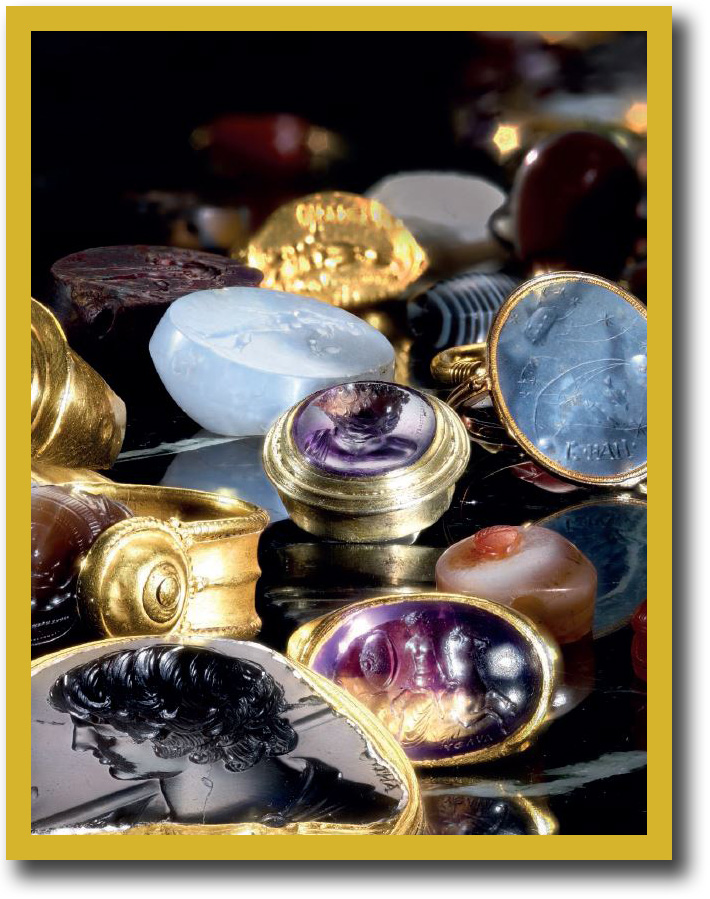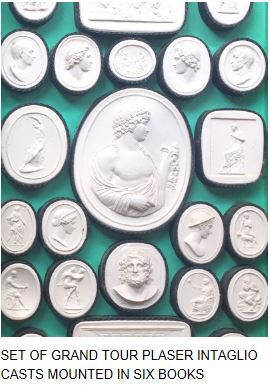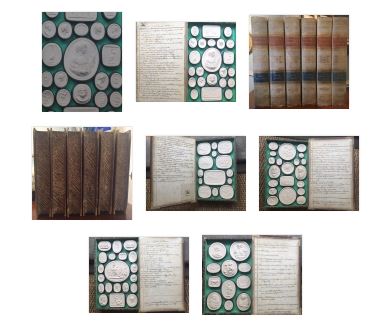Christie’s in New York had an important auction of 40 ancient cameos and intaglios on the block at its April 29, 2019 MASTERPIECES IN MINIATURE auction. Sale total including buyer’s premium: USD 10,640,500
Two notable pieces from the sale which realized the highest prices were:
LOT 32
A Roman Amethyst Ringstone with a portrait of DEMOSTHENES
Signed by Dioskourides, CIRCA Late 1st Century B.C.
Price Realized: USD 1,575,000
LOT 37
A Roman Black Chalcedony Intaglio Portrait of Antinous
CIRCA 130 – 138 A.D.
Price realized: USD 2,115,000
These two pieces and fifteen more were acquired by the Getty Museum in Los Angeles. For information on the Getty purchase, including a complete listing, CLICK HERE.
A blog entry was posted after the sale at http://www.thehistoryblog.com/archives/55165 which in a short article addresses carved gems through the ages and some of the pieces acquired by the Getty.
The sale created a lot of interest. Another article appeared at https://www.antiquestradegazette.com/print-edition/2019/may/2392/feature/antiquities-single-owner-collection-of-cameos-and-intaglios-in-new-york-proved-the-highlight-of-classic-week/
Click Here to view the entire auction information, catalog, and results. There are also a couple of links to articles on gem engraving.
From the catalog: “The forty superb engraved
gems and cameos presented here represent a small portion of a much larger
collection originally assembled by Giorgio Sangiorgi (1886-1965). Much of
the collection, but not all, was recently published by Sir John Boardman and
Claudia Wagner, Masterpieces in Miniature: Engraved Gems from Prehistory to
the Present in 2018. Not a small number of them come from famous older
collections, some with provenance back to the Renaissance. Many are without
question true masterpieces of the gem engraver’s art, some world-renowned,
rivaling the best works of the major arts of every other medium.”
Most pieces were originally estimated to be in the $30,000 – $50,000 range with several in the $100,000’s and one at $300,000 – $500,000. The final average price, including buyers premium, was about $250,000!!!!
The value of the glyptic arts is alive and well !
Christie’s London had a sale in 2017 of other pieces from the Sangiorgi Collection. See the post below or Click Here.
